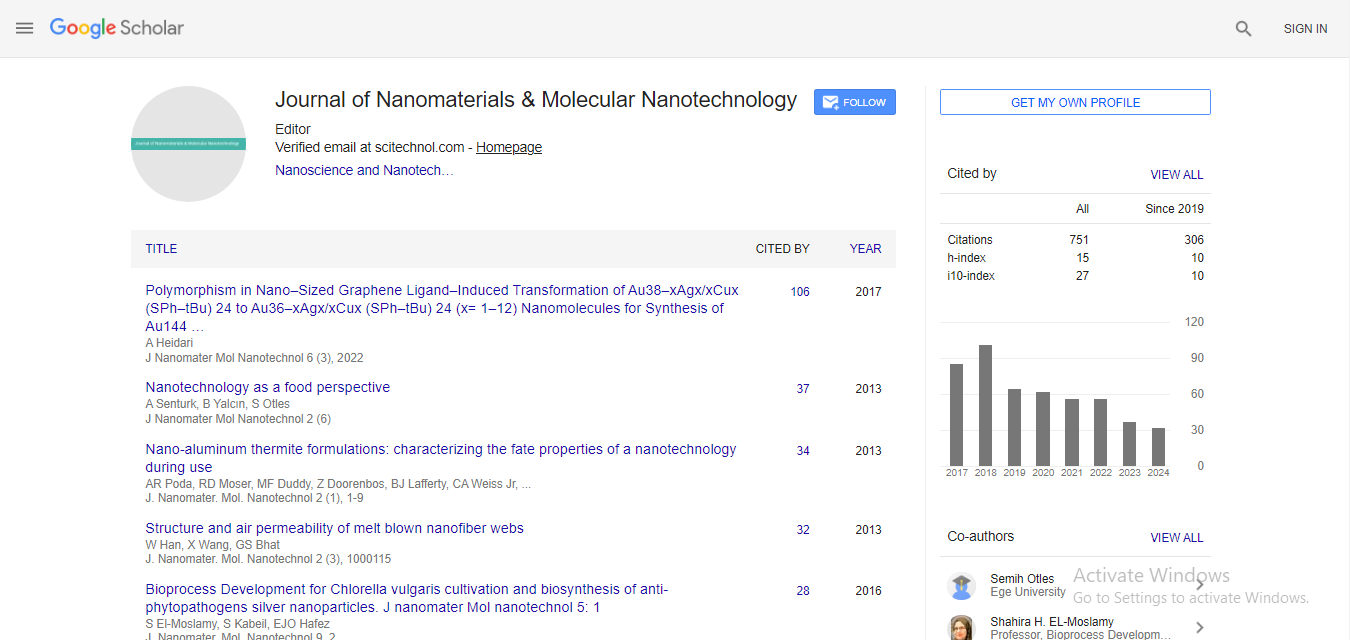Integration of carbon nanotubes derivatives and Omani biowastes activated carbon for wastewater treatment
Meisam Valizadeh Kiamahalleh, Almahanad Al Kalbani, Bashair Aloraimi, Hanaa Al Balushi, Khadija Al Balushi, Mohammad Valizadeh Kiamahalleh, Amin Firouzi and Mohammad Al Abri
International Maritime College Oman, Oman
: J Nanomater Mol Nanotechnol
Abstract
Rapid population growth and lack of access to safe and clean potable water, have recently been of major global concerns. The bioaccumulation of the substantial water contaminants in the living cells brings genuine health issue to the human and generates significant environmental impact. Utilizing the Carbon Nanotubes (CNTs) derivatives is one of the advanced technologies recently applied for the wastewater treatment due to outstanding and diverse physio-chemical properties offered by CNTs. The large surface area, flexibility in number of activated functional groups, reasonable adsorption behavior in water, and excellent removal efficiency of heavy metals are of those properties which introduced CNTs as a unique adsorbent, but with very soft 3D scaffold. Activated carbon prepared from the abundantly available and cost effective biowastes offers a more rigid porous backbone for adsorbent materials. Integrating the well-developed porous structure of carbon materials from low-cost Omani agricultural biowastes (i.e. date seeds) and excellent adsorption properties of the CNTs derivatives showed to be an effective method for the removal organic and inorganic contaminants from water. The integrated composite products in our work with relatively easy preparation method and biocompatibility, demonstrated to be excellent candidates for water treatment agents. From our proposed batch experiments, the influences of different parameters on the maximum adsorption capacity of water contaminants, the adsorption mechanism and kinetic models were investigated. The adsorption capacity was highly encouraging, but uniform integration of the CNTs derivatives in porous activated carbon yet remains a challenge, and work is ongoing to explore the reliable methodology to generate such uniform 3D scaffold structured composites with more controllable adsorption profile.
Biography
Meisam Valizadeh Kiamahalleh has received his Bachelor’s and Master’s in Chemical Engineering from Mazandaran University, Iran and Universiti Sains Malaysia. His MSc research project was in collaboration with Advanced Materials Research Center, SIRIM and dealt with synthesis, characterization and testing of carbon nanotubes-based nanocomposites for the supercapacitor electrode materials, which ended up with 6 ISI journal articles and 4 international conference papers. He has completed his PhD degree at the School of Chemical Engineering, The University of Adelaide, Australia. His PhD research work yielded two patents. His current research interests are mainly focused on designing and fabricating novel nano porous materials for the area of adsorption all the way from fundamentals to applications (i.e. in wastewater treatment, controlled drug delivery system and energy storage applications). Doing multidisciplinary research in nanotechnology is his passion and also a part of his academic path in International Maritime College Oman, where he is employed as a Senior Lecturer in the Process Engineering Department.
E-mail: meisam@imco.edu.om
 Spanish
Spanish  Chinese
Chinese  Russian
Russian  German
German  French
French  Japanese
Japanese  Portuguese
Portuguese  Hindi
Hindi 



